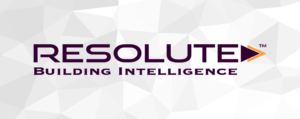By Chris Hallendy, CEO, Resolute Building Intelligence
How analytics and IoT are converging to provide building professionals with the data, answers, and actions needed to optimize building performance
The ability of analytics to help improve performance is undeniable. Whether it’s heath care professionals using analytics to improve patient care, automobile manufacturers using analytics to build the right vehicles for the right markets, or sports teams (from high school to the pros) using analytics to gain a competitive edge, two things are abundantly clear—analytics work and just about everyone is using them.
But why do analytics work? What makes them so powerful?
The answer is in the data. Every industry, or business, or function, or even individual process produces an enormous amount of data. And this data tells a story, an important story, about what works, what doesn’t work, what could work, and what definitely won’t work. Data tells a story about what works well together, what needs to be isolated, and what’s missing. Data holds all the secrets to meaningful performance improvements across a spectrum of desired outcomes such as winning more games, selling more cars, or saving more lives. But data on its own is nothing more than a bunch of zeros and ones stored away and being unproductive in the deep depths of some firewall-protected database or somewhere up in the Cloud.
That’s where analytics comes into play. In a nutshell, analytics is a scientific process that turns data into answers by analyzing raw data to formulate conclusions about that data in order to gain insights that can be used to make things better. In other words, analytics is the narrator responsible for telling the data story in a logical, comprehensive, and understandable way.
The Evolution of Analytics
Prior to the arrival of the Internet, cloud computing and Big Data principles, analytics was conducted by teams of data scientists pouring over massive amounts of data searching for correlations, trends, and patterns from which educated insights could be formulated and then used in some meaningful way to make improvements. As you might imagine, this was a time-consuming, expensive, and largely ineffective process employed by only the largest, best-funded organizations.
This is no longer the case. IoT has Democratized data, and the Cloud has made advanced, low-cost technology available to the masses. At the same time, monumental increases in computing power coupled with falling computer processor costs have made the programmatic analysis of data commercially viable. Now, what once took teams of scientists working at the largest companies weeks, months, or even years to complete can be done automatically and affordably in a fraction of that time by even the smallest of organizations.
Today, it’s virtually impossible to find an industry or a professional discipline that doesn’t leverage analytics to help improve performance in some way or another. In the building industry, the use of analytics is rapidly becoming the norm in helping building owners and service providers alike drastically improve building performance and achieve any number of business benefits from reduced utility use and maintenance costs to achieving competitive differentiation in the ultra-competitive building services market.
Analytics—A Timely Example
Indoor air quality (IAQ) in buildings has always been an important topic, particularly as it relates to occupant health and productivity. It is well known that IAQ can aggravate allergies and asthma in some people and cause dizziness and headaches in others. This is certainly a problem and one that can and must be actively addressed, but what we’ve learned over the last few months is that IAQ can have a far greater impact on people’s health as it relates to the spread of airborne pathogens in confined spaces. Actually, Learned may not be the right word to use here. Reminded might be a better choice, as the building industry has long known about the impact proper ventilation has on controlling the spread of infection in hospitals, evident by required ventilation rates in health care facilities as defined by ASHRAE Standards 62.1 and 170.
The bottom line is that ensuring optimal indoor air quality at all times in all buildings is simply not an option, as dizziness and headaches will be the least of our problems if we fail to do so. ASHRAE 62.1 and 170 can no longer be considered ventilation-rate standards aimed solely at hospitals but, rather, must be adopted by all buildings where people live, work, and play en masse. But let’s also be clear that while such an action would be a great start, standards alone aren’t nearly enough to ensure the optimization of indoor air quality to promote better health and productivity while mitigating the risk of unwittingly spreading infectious, airborne diseases. You see, standards are fantastic for outlining what needs to be done but only action determines what actually gets done.
Sounds daunting, right? As building professionals, how do we continually account for the proper ventilation and resulting air quality across spaces totaling hundreds of thousands and even millions of square feet? Even if our buildings adopt rigorous ventilation standards or are designed to LEED or WELL specifications for higher thresholds of outdoor airflow, how do we know we’re actually succeeding in optimizing the quality of our indoor air? Moreover, how do we know that we’re sustaining that optimized IAQ over time as conditions change, equipment ages, and performance slips?
The good news is that, despite being at the vanguard of this critical battle to improve IAQ, building professionals aren’t alone in this fight. Technologies such as sensors that detect IAQ and other building problems in real-time, building automation systems that store massive amounts of equipment operational data, IoT devices and gateways that connect diverse systems and collect disparate data, and advanced analytics software that transforms this data into answers and actions to rapidly identify and resolve these problems exist today and must be deployed in this struggle.
Frankly, without the power of IoT and analytics in their arsenal, building professionals lack the firepower to truly optimize and maintain IAQ and, thus, are left with little recourse but to employ rigorous IAQ standards and to hope that all goes well. That said, as IoT continues to take hold in today’s modern building ecosystem and the availability of advanced technology to capture and analyze data becomes more prevalent, access to that critical firepower is not an issue.
Analytics And IoT Combined
 Case-in-point, KMC Controls and Resolute Building Intelligence have partnered to provide a unique solution that seamlessly combines the connectivity of IoT with KMC Commander™ and the power of analytics with Resolute Fusion™ to optimize performance across the building infrastructure, including IAQ and hundreds of other building characteristics. Through revolutionary cloud-to-cloud integration technology and patent-pending automated building integration functionality, buildings utilizing the KMC Commander™ IoT platform to collect and aggregate data can literally be connected to the Resolute Cloud™ in seconds and configured shortly thereafter with analytics-driven performance insights available by day’s end.
Case-in-point, KMC Controls and Resolute Building Intelligence have partnered to provide a unique solution that seamlessly combines the connectivity of IoT with KMC Commander™ and the power of analytics with Resolute Fusion™ to optimize performance across the building infrastructure, including IAQ and hundreds of other building characteristics. Through revolutionary cloud-to-cloud integration technology and patent-pending automated building integration functionality, buildings utilizing the KMC Commander™ IoT platform to collect and aggregate data can literally be connected to the Resolute Cloud™ in seconds and configured shortly thereafter with analytics-driven performance insights available by day’s end.
Analytics for Everyone
At Resolute, it’s been our goal from the very beginning to make analytics more accessible to more people across the building industry, meaning easier, faster, and more affordable.
Our solution was designed from the ground-up to help customers optimize the performance of their buildings by rapidly and accurately transforming the massive amounts of incoherent performance data generated daily by building systems and equipment into real-time answers to real-world problems. Resolute was founded by tech-industry veterans with extensive experience developing Big-Data, cloud-based software solutions for large enterprise customers across multiple verticals such as real estate, banking, transportation, manufacturing, and others. In short, we are Big-Data, software experts. The Resolute technology team includes highly skilled software developers, energy engineers, system integrators, and analytics experts. This unique blend of talent comprises the core competencies, skills, and experience needed to build an innovative and intuitive analytics solution powerful enough to competently address today’s building-performance challenges.
If you would like to learn more about Resolute or see our solution in action, please contact us or book a demo.
 Cart
Cart